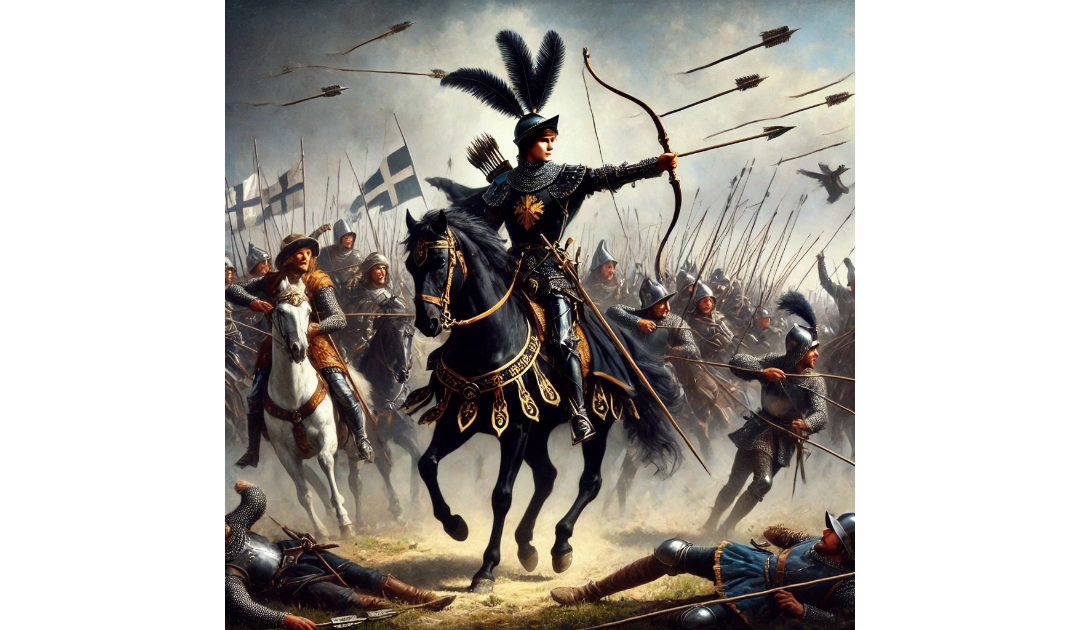On the 17th of March, 1337, Edward, the Black Prince was made Duke of Cornwall, the first Duchy in England. Edward of Woodstock, known to history as the Black Prince, was one of medieval England’s most formidable warriors. As the eldest son of King Edward III, he was heir to the throne but never became king, dying before his father. However, his military prowess and chivalric reputation cemented his place as one of the greatest knights of the 14th century.
Born on the 15th of June, 1330, Edward was the first son of Edward III and Queen Philippa of Hainault. Groomed for kingship from an early age, he was given the title Prince of Wales in 1343. His education was deeply rooted in the values of chivalry, leadership, and military strategy, which would define his later achievements.
His greatest triumphs came during the early phase of the Hundred Years’ War (1337–1453), a conflict between England and France over claims to the French throne. By 1346, at just 16 years of age, Edward commanded troops at the Battle of Crécy, one of the most decisive English victories. Despite his youth, he displayed remarkable leadership, bravery, and tactical intelligence, leading his forces to a crushing victory over the numerically superior French army.
Ten years later, in 1356, Edward achieved his most famous victory at the Battle of Poitiers. With an army of around 6,000 men, he faced a much larger French force led by King John II. Using terrain and innovative tactics to his advantage, Edward’s army routed the French, capturing King John and many nobles. This victory forced France into negotiations that resulted in the Treaty of Brétigny (1360), securing a large territorial expansion for England.
The battle cemented Edward’s reputation as one of the finest military leaders of his time. His use of longbowmen, strategic positioning, and well-disciplined troops became hallmarks of English warfare.
The origin of Edward’s nickname, “the Black Prince,” is debated. Some historians suggest it came from the black armour he allegedly wore in battle, while others believe it was a posthumous reference to the devastation he inflicted on France, particularly in his brutal campaigns. Regardless, the name endures, symbolising both his military ferocity and his enigmatic legacy.
Edward’s military career extended beyond France. In 1367, he led an expedition to Spain to support Pedro the Cruel of Castile against his rival, Henry of Trastámara. At the Battle of Nájera, Edward once again demonstrated his military skill, securing a significant victory. However, the campaign exhausted his resources and exposed his army to disease.
Edward himself fell seriously ill, probably from dysentery or a chronic illness that would plague him for the rest of his life. By 1371, he was forced to return to England, relinquishing his role as Prince of Aquitaine, the vast French territory he had governed.
As his health deteriorated, Edward withdrew from active politics and military affairs. In 1376, he fell gravely ill, and on the 8th of June that year, he died at the age of 45, just one year before his father, Edward III. His son, Richard II, would later inherit the throne, but Edward’s premature death denied England the warrior-king it might have had.
He was buried in Canterbury Cathedral, where his tomb remains a striking medieval monument, adorned with a replica of his famous achievements and armor.
Edward the Black Prince left an enduring legacy in English history. He epitomised the chivalric ideal, displaying courage, leadership, and a deep sense of duty. His military successes laid the foundation for England’s dominance in the Hundred Years’ War, and his reputation as a fearsome warrior persisted long after his death.
Though he never ruled as king, his legend remains, shaping the romanticised image of the medieval knight and warrior-prince.

